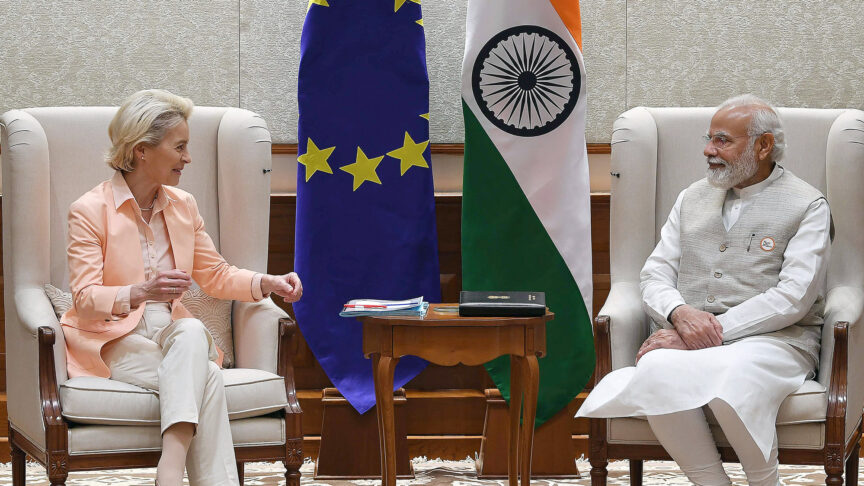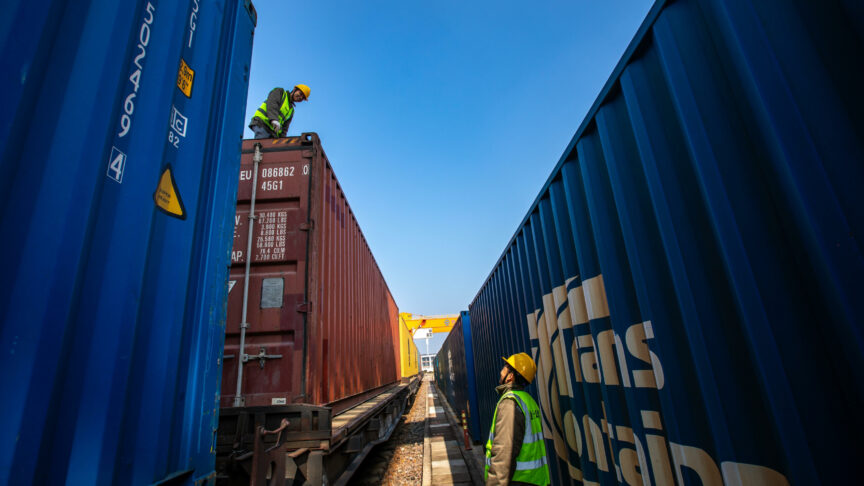China’s embrace of AI: Enthusiasm and challenges
If AI technologies prove revolutionary, China could emerge as a true global leader in innovation – an excerpt from our latest China Analysis
In China, enthusiasm for innovation in artificial intelligence starts at the highest levels. In his remarks to the 19th party congress, Xi Jinping called for China to “promote the deep integration of the internet, big data, and AI with the real economy.” His 2018 new year’s address saw two books on AI positioned on the bookshelf behind him, another indication of the extent of his interest. China’s ‘rise’ in AI – and potential emergence as an “AI superpower” – commands headlines, while the remarks of China’s policy and business leaders indicate a keen awareness of continued challenges and shortcomings.[1]
Innovation is at the core of Xi’s strategy to advance the “China Dream” (中国梦 zhongguo meng) of national rejuvenation. China’s leaders believe that their country’s historical technological backwardness resulted in weakness and vulnerability to foreign powers. This reinforces their belief in the importance of science and technology in enhancing China’s power today. Under Xi, China aims to emerge at the forefront of innovation by 2030 and as a global powerhouse, even superpower, in innovation by the middle of the century.[2] The Chinese government recognises AI as a unique opportunity to enable the transformation of China’s economy at this “decisive” stage: China’s New Generation AI Development Plan describes the cultivation and expansion of AI industries as a way to “inject new kinetic energy” into China’s economic development, increasing productivity and national competitiveness. A slowdown in growth could pose even an existential challenge to the legitimacy of the Communist Party of China. The emphasis on AI therefore reflects these concerns and the recognition of the utility of AI in contributing to social construction and governance.
In certain respects, the level of enthusiasm for AI in enhancing education and healthcare reflects an almost techno-utopian perspective on the potential positive transformation that AI can bring about. Yet this is paired with an emphasis on the use of AI to enhance social control and stability. China convened the first World Artificial Intelligence Conference in Shanghai in September 2018, showcasing the achievements of some of its leading companies. Xi lauded the conference’s theme of a “new era empowered by AI” (人工智能赋能新时代 rengong zhineng funeng xin shidai) and called for the promotion of AI “for the benefit of mankind.”
That said, the general excitement about AI in China is tempered by an awareness of the continued challenges and persistent shortcomings in certain core technologies. Chinese technology and policy leaders often discuss these quite candidly, including acknowledging gaps in talent and advanced research in central and local plans and policies. While it is difficult even to identify the right metrics to track China’s trajectory in AI, there is a general consensus that China is still striving to catch up with the United States. For China, the concept of “taking a turn sharply to surpass” (弯道超车 wandao chaoche) – implicitly, the US – is a core priority.
How is it setting about to do this? A common misconception among Westerners is the notion that China’s approach to AI development is primarily state-driven remains. In fact, it is undertaking a more market-oriented approach to advancing AI, while also providing strong state support. For instance, the central government and a growing number of local authorities are now concentrating on providing open and open-source platforms for innovation. They focus on making software, hardware, and computing resources widely available to enable mass innovation and entrepreneurship.
General excitement about AI in China is tempered by an awareness of the continued challenges and persistent shortcomings in certain core technologies
Chinese technology leaders and policymakers are, however, acutely aware that China still faces major obstacles to indigenous innovation in core technologies. For example, in response to a violation of sanctions by telecommunications company ZTE, the US introduced a temporary ban to prevent it from buying American technology. The move brought ZTE to the brink of collapse. This was a harsh awakening at a time when enthusiasm about the Made in China 2025 innovation plan was reaching a new peak. It also highlighted how the US might deny China the technology it needs, especially given the backdrop of a new era of confrontation and a potential decoupling in the bilateral relationship.
China’s quest to advance AI includes looking at these new technologies through a national security and defence lens, following concerns about other militaries’ activities and investments. China’s defence industry is organising to build capabilities in anticipation of future “intelligentised” (智能化 zhinenghua) warfare, in which AI will be integral to military power. As a result, major players in the Chinese defence industry are drafting and promoting a plan to guide the development of AI in aviation and aerospace. This new initiative, which is to guide these sectors over the next 15 years, reflects a candid recognition of current challenges and impediments to progress, which has motivated the Chinese defence industry’s call for greater support from the government. At present, China suffers from several disadvantages in applying AI to aerospace research and development, including bottlenecks in theory and technology and shortfalls in the availability of talented researchers.[3] At a basic level, the dispersal of the key data across different units in industry, the military, and even universities has remained an impediment to sharing and development of aerospace applications.
Despite this enthusiasm for military applications of AI, Chinese leaders also recognise the risks that might result from it. A recent China Institute of Information and Communications white paper on AI safety and security (人工智能安全白皮书 rengong zhineng anquan baipishu) characterised AI as a “double-edged sword,” observing, “AI can be used to construct a new type of military strike force, directly threatening national security.”
China’s embrace of AI reflects a growing expectation and assessment by both political and technology leaders that these AI technologies could prove revolutionary. If it is successful in leveraging the full potential of AI to enhance its development, China could emerge as a true global leader in innovation. However, as the viewpoints and perspectives of Chinese thought-leaders and stakeholders reveal, there remain real obstacles and reasons for concern about future challenges. This includes questions around bolstering capabilities in core technologies and confronting new questions of safety and security that will emerge along the way. While China’s future trajectory in AI remains uncertain, active debates and engagement in the policy process reflect the intense attention that this strategic technology is receiving.
Read the full edition of ECFR’s China Analysis, with chapters on social credit, AI, the digital revolution, and global technological competition.
Elsa B Kania is an adjunct fellow on the Technology and National Security Program at the Center for a New American Security (CNAS), an independent analyst, consultant, and co-founder of the China Cyber and Intelligence Studies Institute, and a PhD student in Harvard University’s Department of Government.
FOOTNOTES
[1] Kai-Fu Lee, AI Superpowers: China, Silicon Valley, and the New World Order, Houghton Mifflin Harcourt, 2018.
[2] “CPC State Council Releases the “National Innovation-Driven Development Strategy Guidelines”.
[3] “National CPPCC’s “Artificial Intelligence Development and Countermeasures”
Bi-weekly Consultation Symposium”).
The European Council on Foreign Relations does not take collective positions. ECFR publications only represent the views of their individual authors.


